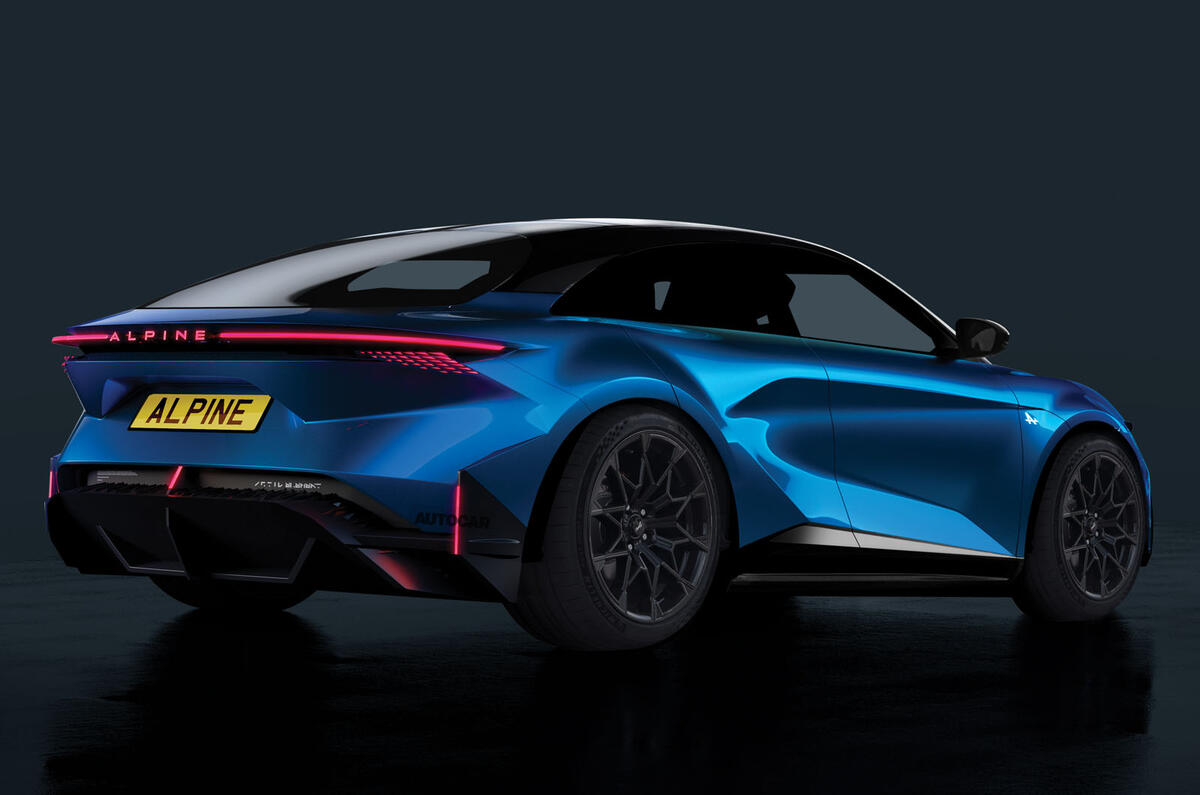Alpine’s upcoming electric sports cars will use in-wheel motors as part of a radical plan to reduce weight below that of an equivalent ICE sports car, Renault Group CEO Luca de Meo has confirmed.
“It will change everything,” de Meo said of the Alpine Performance Platform (APP), which has been designed by the premium brand for up to four separate models - including a sports car due next year to replace the A110, previewed on the sidelines of the A390 SUV's unveiling.
In-wheel motors offer a range of benefits to Alpine when trying to package a sports car for the modern era, Renault Group design head Laurens van den Acker told Autocar.
“With a motor in the wheels, you have more room for either luggage or footwells or for sliding your seat backwards or forwards,” he said. “The A110 is fine for a weekend, but if you want to appeal to a bigger audience, you need more room.”
In-wheel motors have forced the designers to slightly widen the car's body, van den Acker added.
Alpine plans “three or four” models on the APP platform, de Meo said. Along with a two-seat coupé and a roadster, Alpine will launch a four-seat Porsche Taycan rival called the A310, which de Meo described as a “sports sedan”.
The use of in-wheel motors frees up space for Alpine to put the batteries in a different location than the traditional place of under the floor – a format that has proven restrictive for sports cars, given the need to force the driver to sit higher.
The aluminium platform will save up to 150-250kg compared with equivalent electric sports cars, according to Alpine, but further details remain under wraps.
Parent company Renault will use in-wheel motors first in the Renault 5 Turbo 3E - a £135,000 electric hyper hatchback that's due in limited production next year.
That car's two rear-mounted in-wheel motors combine to produce a claimed 3540 lb ft of wheel torque.
The all-aluminium platform was developed by Alpine, suggesting it previews the APP.
In-wheel motors also allow individual control of separate wheels, known as torque vectoring. Alpine has introduced the technology in the A390, which uses two inboard motors at the rear.
Issues with in-wheel motors include the extra unsprung weight and the potentially damaging forces put through the motor, for example when the wheel hits a pothole, and the tech has yet to make it onto a production car.





Join the debate
Add your comment
Slating non in wheel electric motors doesn't sit well when you replacing them with a tri motor set up. 2 wheels might have individual control but the other 2 still don't.
First to market isn't always the best idea,but, you'd think that during the development of the in wheel e motor that they would have run test to see what the durability would be like.